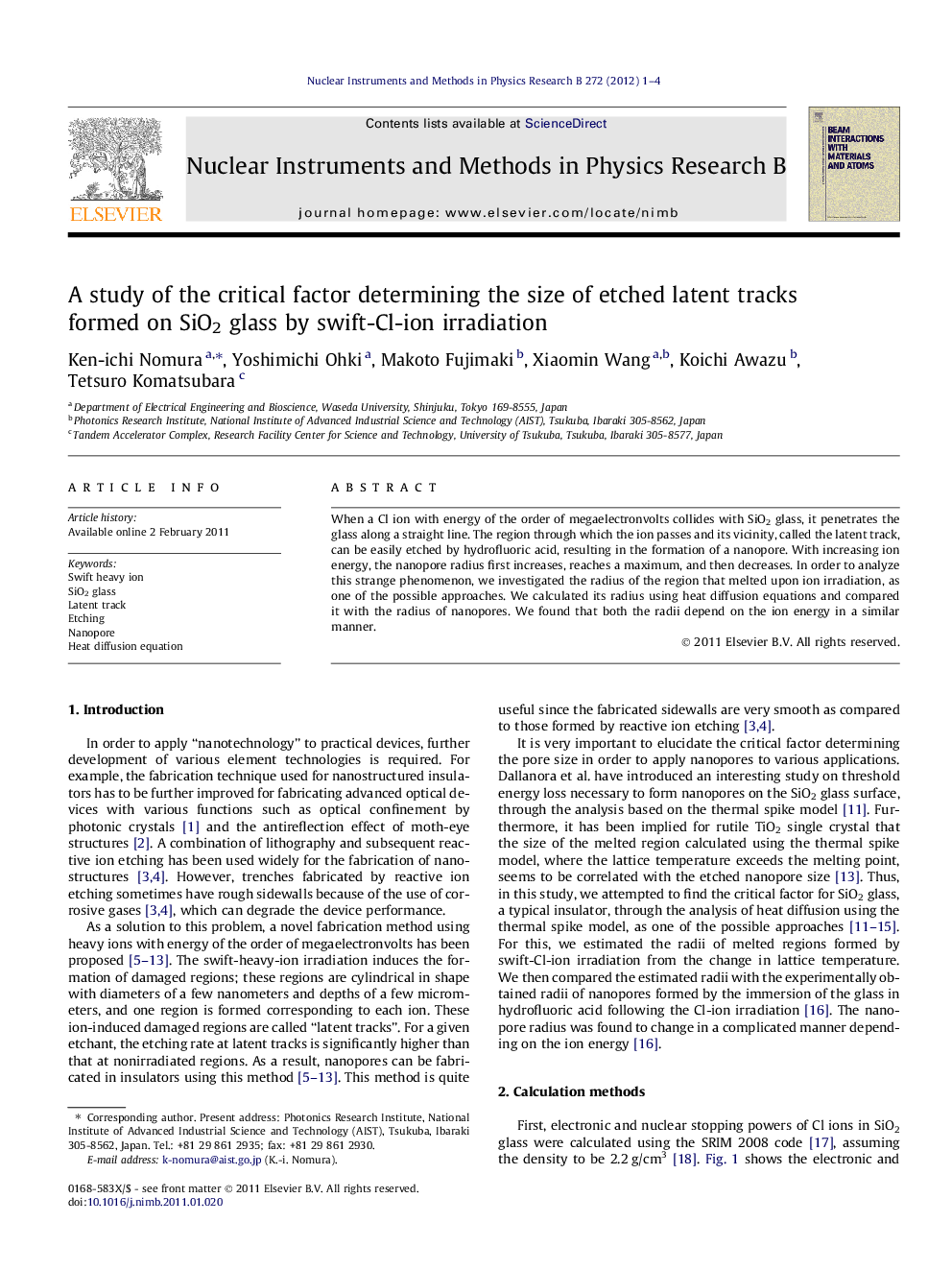| Article ID | Journal | Published Year | Pages | File Type |
|---|---|---|---|---|
| 1680890 | Nuclear Instruments and Methods in Physics Research Section B: Beam Interactions with Materials and Atoms | 2012 | 4 Pages |
Abstract
When a Cl ion with energy of the order of megaelectronvolts collides with SiO2 glass, it penetrates the glass along a straight line. The region through which the ion passes and its vicinity, called the latent track, can be easily etched by hydrofluoric acid, resulting in the formation of a nanopore. With increasing ion energy, the nanopore radius first increases, reaches a maximum, and then decreases. In order to analyze this strange phenomenon, we investigated the radius of the region that melted upon ion irradiation, as one of the possible approaches. We calculated its radius using heat diffusion equations and compared it with the radius of nanopores. We found that both the radii depend on the ion energy in a similar manner.
Related Topics
Physical Sciences and Engineering
Materials Science
Surfaces, Coatings and Films
Authors
Ken-ichi Nomura, Yoshimichi Ohki, Makoto Fujimaki, Xiaomin Wang, Koichi Awazu, Tetsuro Komatsubara,
